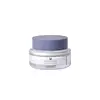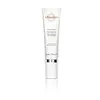What's inside
What's inside
 Key Ingredients
Key Ingredients

 Benefits
Benefits

 Concerns
Concerns

 Ingredients Side-by-side
Ingredients Side-by-side

Water
Skin ConditioningDipropylene Glycol
HumectantSqualane
EmollientButylene Glycol
HumectantCaprylic/Capric Triglyceride
Masking1,2-Hexanediol
Skin ConditioningSodium Hyaluronate
HumectantHydrolyzed Collagen
EmollientNiacinamide
SmoothingC12-16 Alcohols
EmollientPalmitic Acid
EmollientHydrogenated Lecithin
EmulsifyingHydrogenated Polydecene
EmollientHydroxyacetophenone
AntioxidantCaprylyl Glycol
EmollientDipotassium Glycyrrhizate
HumectantAmmonium Acryloyldimethyltaurate/Vp Copolymer
Hydroxyethyl Acrylate/Sodium Acryloyldimethyl Taurate Copolymer
Emulsion StabilisingSorbitan Isostearate
EmulsifyingPolyglyceryl-2 Stearate
EmulsifyingGlyceryl Stearate
EmollientStearyl Alcohol
EmollientEthylhexylglycerin
Skin ConditioningTocopherol
AntioxidantAdenosine
Skin ConditioningDisodium EDTA
Water, Dipropylene Glycol, Squalane, Butylene Glycol, Caprylic/Capric Triglyceride, 1,2-Hexanediol, Sodium Hyaluronate, Hydrolyzed Collagen, Niacinamide, C12-16 Alcohols, Palmitic Acid, Hydrogenated Lecithin, Hydrogenated Polydecene, Hydroxyacetophenone, Caprylyl Glycol, Dipotassium Glycyrrhizate, Ammonium Acryloyldimethyltaurate/Vp Copolymer, Hydroxyethyl Acrylate/Sodium Acryloyldimethyl Taurate Copolymer, Sorbitan Isostearate, Polyglyceryl-2 Stearate, Glyceryl Stearate, Stearyl Alcohol, Ethylhexylglycerin, Tocopherol, Adenosine, Disodium EDTA
Water
Skin ConditioningPropanediol
SolventCaprylic/Capric Triglyceride
MaskingGlycerin
HumectantShea Butter Cetyl Esters
Skin ConditioningShorea Stenoptera Seed Butter
EmollientSea Water
HumectantC12-16 Alcohols
EmollientBehenyl Alcohol
EmollientAmmonium Acryloyldimethyltaurate/Vp Copolymer
Carthamus Tinctorius Seed Oil
MaskingCetyl Palmitate
EmollientNiacinamide
SmoothingAloe Barbadensis Leaf Juice
Skin ConditioningPoria Cocos Extract
Skin ConditioningTetrapeptide-14
Skin ConditioningCopper Tripeptide-1
Skin ConditioningHinokitiol
Crambe Abyssinica Seed Oil
Skin ConditioningDipotassium Glycyrrhizate
HumectantHydrolyzed Hyaluronic Acid
HumectantOlea Europaea Oil Unsaponifiables
Skin ConditioningBoswellia Serrata Gum Extract
Skin ConditioningHoney Extract
HumectantCamellia Sinensis Leaf Extract
AntimicrobialAspalathus Linearis Leaf Extract
Skin ConditioningHydrogenated Lecithin
EmulsifyingTocopheryl Acetate
AntioxidantPinus Cembra Wood Extract
Skin ConditioningPorphyridium Cruentum Extract
Skin ConditioningPalmitic Acid
EmollientGlyceryl Caprylate
EmollientXanthan Gum
EmulsifyingDimethicone
EmollientMaltodextrin
AbsorbentHydroxyacetophenone
AntioxidantDisodium EDTA
Caprylhydroxamic Acid
Sodium Hydroxide
BufferingCitric Acid
Buffering1,2-Hexanediol
Skin ConditioningCaprylyl Glycol
EmollientEthylhexylglycerin
Skin ConditioningWater, Propanediol, Caprylic/Capric Triglyceride, Glycerin, Shea Butter Cetyl Esters, Shorea Stenoptera Seed Butter, Sea Water, C12-16 Alcohols, Behenyl Alcohol, Ammonium Acryloyldimethyltaurate/Vp Copolymer, Carthamus Tinctorius Seed Oil, Cetyl Palmitate, Niacinamide, Aloe Barbadensis Leaf Juice, Poria Cocos Extract, Tetrapeptide-14, Copper Tripeptide-1, Hinokitiol, Crambe Abyssinica Seed Oil, Dipotassium Glycyrrhizate, Hydrolyzed Hyaluronic Acid, Olea Europaea Oil Unsaponifiables, Boswellia Serrata Gum Extract, Honey Extract, Camellia Sinensis Leaf Extract, Aspalathus Linearis Leaf Extract, Hydrogenated Lecithin, Tocopheryl Acetate, Pinus Cembra Wood Extract, Porphyridium Cruentum Extract, Palmitic Acid, Glyceryl Caprylate, Xanthan Gum, Dimethicone, Maltodextrin, Hydroxyacetophenone, Disodium EDTA, Caprylhydroxamic Acid, Sodium Hydroxide, Citric Acid, 1,2-Hexanediol, Caprylyl Glycol, Ethylhexylglycerin
Ingredients Explained
These ingredients are found in both products.
Ingredients higher up in an ingredient list are typically present in a larger amount.
1,2-Hexanediol is a synthetic liquid and another multi-functional powerhouse.
It is a:
- Humectant, drawing moisture into the skin
- Emollient, helping to soften skin
- Solvent, dispersing and stabilizing formulas
- Preservative booster, enhancing the antimicrobial activity of other preservatives
Ammonium Acryloyldimethyltaurate/Vp Copolymer (let's call it AAVC for short) is a synthetically created polymer. It's used as a film-forming agent and used to thicken the consistency of products.
AAVC is able to increase the consistency and viscosity of products due to its large molecule size. It also prevents ingredients from separating.
We don't have a description for C12-16 Alcohols yet.
This ingredient is an emollient, solvent, and texture enhancer. It is considered a skin-softener by helping the skin prevent moisture loss.
It helps thicken a product's formula and makes it easier to spread by dissolving clumping compounds.
Caprylic Triglyceride is made by combining glycerin with coconut oil, forming a clear liquid.
While there is an assumption Caprylic Triglyceride can clog pores due to it being derived from coconut oil, there is no research supporting this.
Learn more about Caprylic/Capric TriglycerideCaprylyl Glycol is a humectant and emollient, meaning it attracts and preserves moisture.
It is a common ingredient in many products, especially those designed to hydrate skin. The primary benefits are retaining moisture, skin softening, and promoting a healthy skin barrier.
Though Caprylyl Glycol is an alcohol derived from fatty acids, it is not the kind that can dry out skin.
This ingredient is also used as a preservative to extend the life of products. It has slight antimicrobial properties.
Learn more about Caprylyl GlycolDipotassium Glycyrrhizate comes from licorice root.
Extracts of licorice have demonstrated to have antibacterial, anti‐inflammatory, antiviral, antioxidant properties.
One component, glabridin, has extra potent antioxidant and soothing properties. It has also been found to block pigmentation from UVB rays in guinea pigs.
Licorice Root also contains a flavonoid. Flavonoids are a natural substance from in plants. Flavonoids also have antioxidant properties.
Another component, glycyrrhizin, has been found to have anti-inflammatory and antimicrobial benefits. This may make licorice root extract effective at treating acne. However, more research is needed to support this.
Liquiritin is one of the flavone compounds found in licorice. It has been found to help lighten skin by preventing tyrosinase from reacting with tyrosine. When the two react, protein is converted to melanin. Melanin is the substance in your body that gives your features pigmentation.
Licorice root is native to Southern Europe and Asia. It has been used in traditional Chinese medicine to help with respiratory issues.
Learn more about Dipotassium GlycyrrhizateDisodium EDTA plays a role in making products more stable by aiding other preservatives.
It is a chelating agent, meaning it neutralizes metal ions that may be found in a product.
Disodium EDTA is a salt of edetic acid and is found to be safe in cosmetic ingredients.
Learn more about Disodium EDTAEthylhexylglycerin (we can't pronounce this either) is commonly used as a preservative and skin softener. It is derived from glyceryl.
You might see Ethylhexylglycerin often paired with other preservatives such as phenoxyethanol. Ethylhexylglycerin has been found to increase the effectiveness of these other preservatives.
Hydrogenated Lecithin is created from the hydrogenation of lecithin (a group of phospholipids). Hydrogenation is a chemical reaction between hydrogen and another element.
This ingredient is an emollient and emulsifier. As an emollient, it helps soften skin by trapping moisture within. As an emulsifier, it prevents oil and water ingredients from separating.
Hydroxyacetophenone is antioxidant with skin conditioning and soothing properties. It also boosts the efficiency of preservatives.
This ingredient is not irritating or sensitizing.
Niacinamide is a multitasking form of vitamin B3 that strengthens the skin barrier, reduces pores and dark spots, regulates oil, and improves signs of aging.
And the best part? It's gentle and well-tolerated by most skin types, including sensitive and reactive skin.
You might have heard of "niacin flush", or the reddening of skin that causes itchiness. Niacinamide has not been found to cause this.
In very rare cases, some individuals may not be able to tolerate niacinamide at all or experience an allergic reaction to it.
If you are experiencing flaking, irritation, and dryness with this ingredient, be sure to double check all your products as this ingredient can be found in all categories of skincare.
When incorporating niacinamide into your routine, look out for concentration amounts. Typically, 5% niacinamide provides benefits such as fading dark spots. However, if you have sensitive skin, it is better to begin with a smaller concentration.
When you apply niacinamide to your skin, your body converts it into nicotinamide adenine dinucleotide (NAD). NAD is an essential coenzyme that is already found in your cells as "fuel" and powers countless biological processes.
In your skin, NAD helps repair cell damage, produce new healthy cells, support collagen production, strengthen the skin barrier, and fight environmental stressors (like UV and pollution).
Our natural NAD levels start to decline with age, leading to slower skin repair, visible aging, and a weaker skin barrier. By providing your skin niacinamide, you're recharging your skin's NAD levels. This leads to stronger, healthier, and younger looking skin.
Another name for vitamin B3 is nicotinamide. This vitamin is water-soluble and our bodies don't store it. We obtain Vitamin B3 from either food or skincare. Meat, fish, wheat, yeast, and leafy greens contain vitamin B3.
The type of niacinamide used in skincare is synthetically created.
Learn more about NiacinamidePalmitic Acid is a fatty acid naturally found in our skin and in many plant and animal sources. In cosmetics, it is usually derived from palm oil. It serves many purposes in skincare, acting as a cleanser, emollient, and emulsifier.
As an emollient, palmitic acid helps soften and smooth the skin by preventing water loss. In cleansers, it helps remove oil and dirt while creating foam.
Its emulsifying properties help stabilize products by keeping water and oil-based ingredients from separating.
This may not be suitable for fungal acne-prone skin, as fatty acids like this can sometimes trigger breakouts in sensitive individuals.
Learn more about Palmitic AcidWater. It's the most common cosmetic ingredient of all. You'll usually see it at the top of ingredient lists, meaning that it makes up the largest part of the product.
So why is it so popular? Water most often acts as a solvent - this means that it helps dissolve other ingredients into the formulation.
You'll also recognize water as that liquid we all need to stay alive. If you see this, drink a glass of water. Stay hydrated!
Learn more about Water